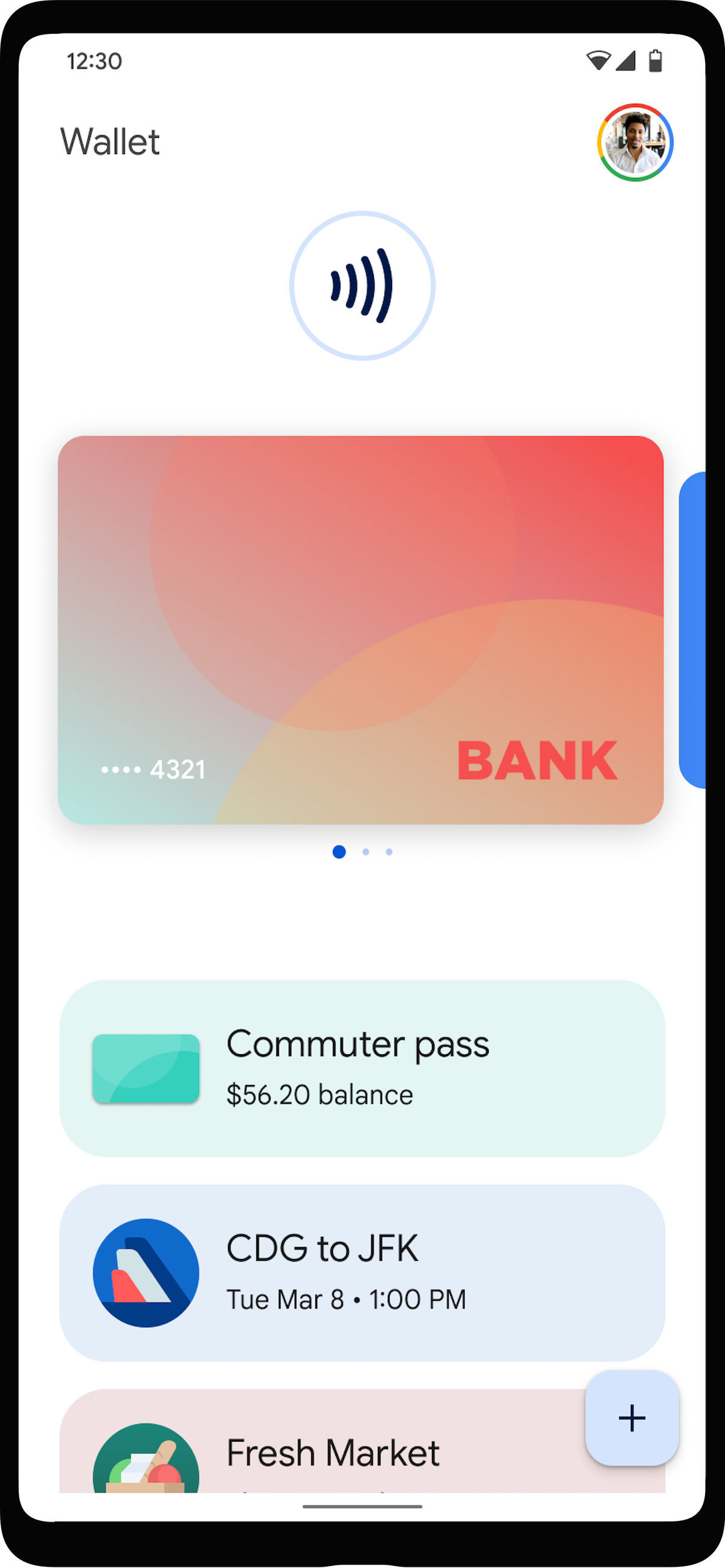Google Pay es la forma más rápida y sencilla de pagar, ya sea en línea, en tiendas físicas o en cualquier otro lugar. Reúne todo lo que necesitas para confirmar tus compras y protege la información de pago en tu Cuenta de Google hasta que tengas todo listo para pagar. Además, Google Pay facilita mantener un control de las compras, canjear puntos de lealtad y recibir sugerencias personalizadas que te ayudarán a ahorrar tiempo y dinero.

Beneficios
La asignación de token de dispositivos en Google Pay les ofrece a las instituciones financieras emisoras de tarjetas la oportunidad perfecta de hacer lo siguiente:
- Destacar tu marca: Los titulares de tarjetas ven el diseño de tu tarjeta cada vez que usen Google Pay.
- Proporcionar una opción de pago segura: Google Pay bloquea los dispositivos y las pantallas de tiempo de espera según sea necesario para garantizar pagos seguros. Google coordina la administración de claves, la asignación de token y seguridad por ti.
- Capturar la forma de pago principal: Los titulares de tarjetas pueden establecer tu tarjeta como su opción de pago principal.
Tokens y tarjetas registradas
Cuando un usuario agrega su tarjeta a Google Pay, obtiene uno o más de los siguientes elementos:
- Token de dispositivo (número DPAN)
- Tarjeta registrada (número PAN o FPAN, fecha de vencimiento y nombre del titular de la tarjeta)
- Token de nube (versión con asignación de token de una tarjeta registrada)
Los tokens de dispositivo, las tarjetas registradas y los tokens de nube se usan en diferentes situaciones. Los tokens de dispositivo están vinculados al dispositivo y pueden usarse en transacciones NFC en tiendas y en transacciones en línea. Las tarjetas registradas y los tokens de nube se almacenan a nivel de la cuenta, en lugar del dispositivo, y pueden usarse en las transacciones entre pares y en línea. Cuando se realiza la asignación de token de una tarjeta, la información de la tarjeta del usuario puede almacenarse como una tarjeta registrada y podría generar un pequeño cargo temporal. Este cargo se reembolsa una vez que se verifica la cuenta. Puedes encontrar más información en la página de asistencia sobre cargos de Google.
En general, esta documentación se enfoca en los tokens de dispositivo en lugar de las tarjetas registradas o los tokens de nube. Para conocer más detalles sobre cómo habilitar la asignación de token de dispositivo consulta la sección Integración con el TSP de este sitio.
Países admitidos
El sitio de asistencia al consumidor mantiene una lista de países en los que se lanzó Google Pay.
Cuentas de Google admitidas
Google Pay funciona con todos los tipos de Cuentas de Google, incluidas las de Gmail, las Cuentas de Google vinculadas a otras direcciones de correo electrónico y las cuentas de Google Workspace.